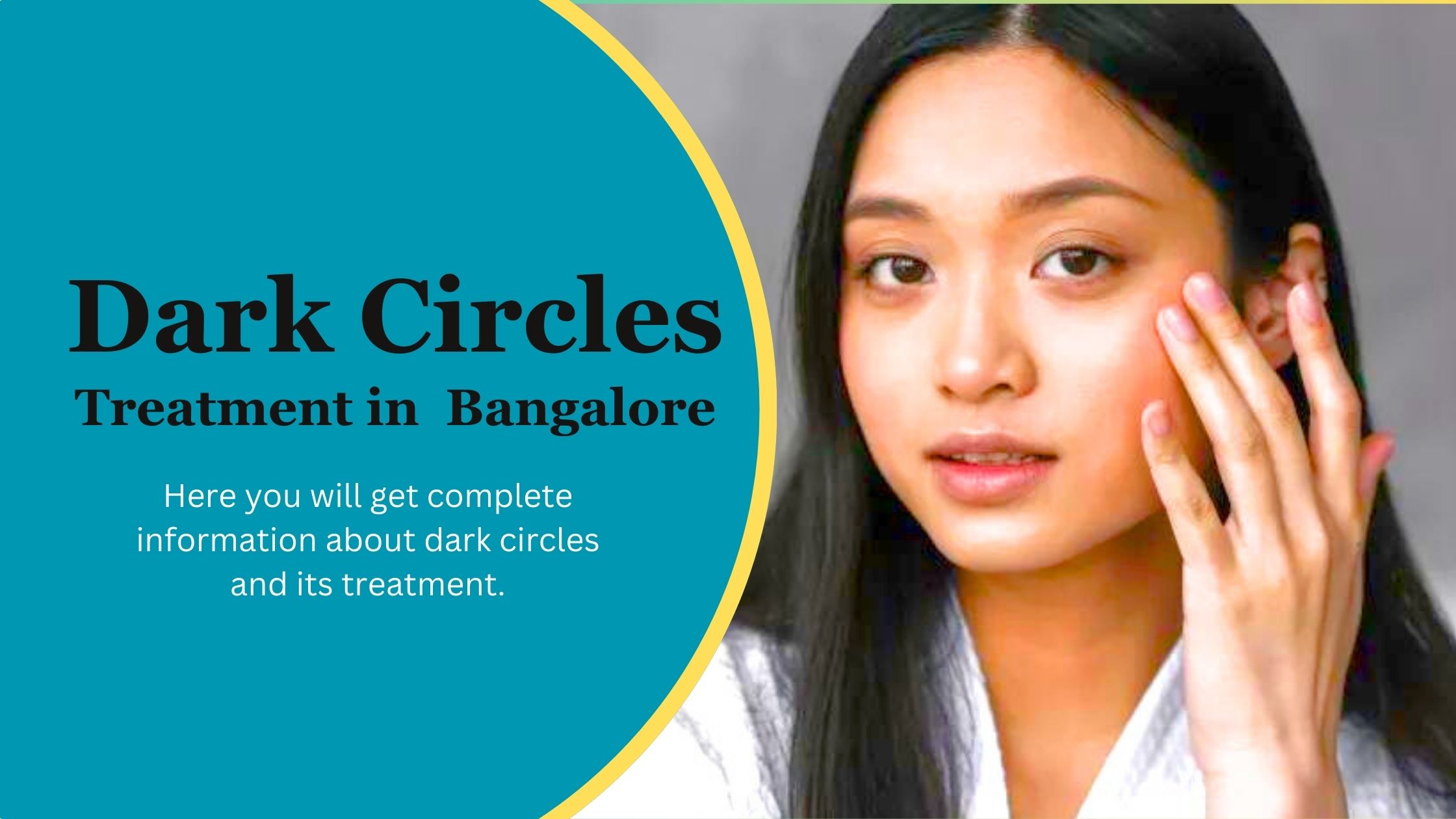Dark circles under your eyes can be caused by a variety of factors, including genetics, aging, weariness, and more. However, they typically do not indicate a health issue. They usually do not need to be taken too seriously because they do not cause any medical concern, but for aesthetic purposes, you might want to lighten their appearance. Although there are many home remedies available to reduce the appearance of dark circles, in some cases, they are not effective. Dark circles caused by thinning of the skin, loss of collagen, thyroid, etc. can be treated with medical treatments.
In this blog, we will delve into a detailed guide to the medical treatments available for dark circles. We have written this blog with the help of insights shared by expert dermatologists that offer the best Dark Circles Treatment in Bangalore. Amongst are the top dermatologists Dr. K.C. Nischal and Dr. Urmila Nischal, founders of Nirmal Skin & Hair Clinic. Continue reading to learn.
What Are The Dark Circles?
The area of skin beneath your eyes appears darker when you have dark circles under them. Depending on your natural skin tone, this area could appear blue, purple, brown, or black in certain places. It is possible that having dark bags under your eyes will make you appear older or exhausted.
There are numerous potential reasons for dark under-eye circles. However, they typically do not indicate a health issue. Most of the time, dark circles beneath your eyes do not warrant concern. However, for aesthetic purposes, you might wish to make your under-eye circles less noticeable.
Types Of Dark Circles
Dark circles may manifest in any of the following ways, depending on their cause:
- Pigmented Dark Circles
Uneven pigment deposition and excessive melanin production can cause brown circles to form under the eyes.
- Vascular Dark Circles
As people age, their facial skin thins and reveals more blood veins beneath the surface. There is a circular pattern of puffiness under the lower eyelid along with discoloration that appears blue, pink, or purple when there is skin thinning, decreased blood flow, and fluid retention under the eyes.
- Structural Dark Circles
Dark circles caused by loss of subcutaneous fat, skin laxity, and under-eye bags are referred to as structural dark circles.
- Mixed Dark Circles
A combination of pigmented, vascular, and structural dark circle characteristics can be seen in mixed dark circles.
Medical Treatments For Dark Circles?
- Skin Lightening Creams
Some topical creams with ingredients like vitamin C, kojic acid, or azelaic acid, or with bleaching agents like hydroquinone, tretinoin, or a combination of the two, can help minimize pigmented dark circles.
- Soft Tissue Fillers
Dermal filler injections might be an option if dark circles are caused by skin thinning or a loss of fatty tissue. Hyaluronic acid filler injections under the eyes can help plump the skin and eliminate dark circles. Due to its inherent ability to hold onto water, hyaluronic acid gel gives the skin more volume and hydration.
- PRP Injections
The process of preparing PRP (platelet-rich plasma) injections involves centrifuging the patient’s blood. They include vital proteins with healing qualities and natural growth factors. Therefore, injecting PRP solution into the area where the dark circle appears can aid in skin repair, and promote blood vessel growth. It boosts oxygen delivery to the skin to combat pigmentation and fortify collagen and the skin, all of which help to lessen the appearance of dark circles. Even more, this treatment can aid in the removal of excess fluid retention and toxins from the skin, which reduces eye puffiness.
- Laser Therapy
- Chemical Peels
Dark circles around the eyes can be treated with acid solutions that reach the upper layer of the middle skin. These help to exfoliate the skin, revealing smoother, more translucent skin. Alpha-hydroxy acids, such as lactic acid and glycolic acid, are frequently used in chemical peels for dark circles.
Conclusion
The appearance of dark circles under the eyes can vary based on skin tone, from purple or blue to dark brown or black. Although there is rarely anything to worry about with these circles, some people may want to minimize them for aesthetic purposes. Fortunately, with the advancement in dermatological techniques, there are many medical treatments available for dark circles.
Searching for the Best Dermatologist in Bangalore for dark circles or any other skin-related concerns? You can make an appointment at Nirmal Skin and Hair Clinic today. The clinic’s skin specialists, Dr. K.C. Nischal and Dr. Urmila Nischal have been treating many skin and hair issues for more than 20 years. You can be well assured under their supervision. To avail of the benefits, visit now!


